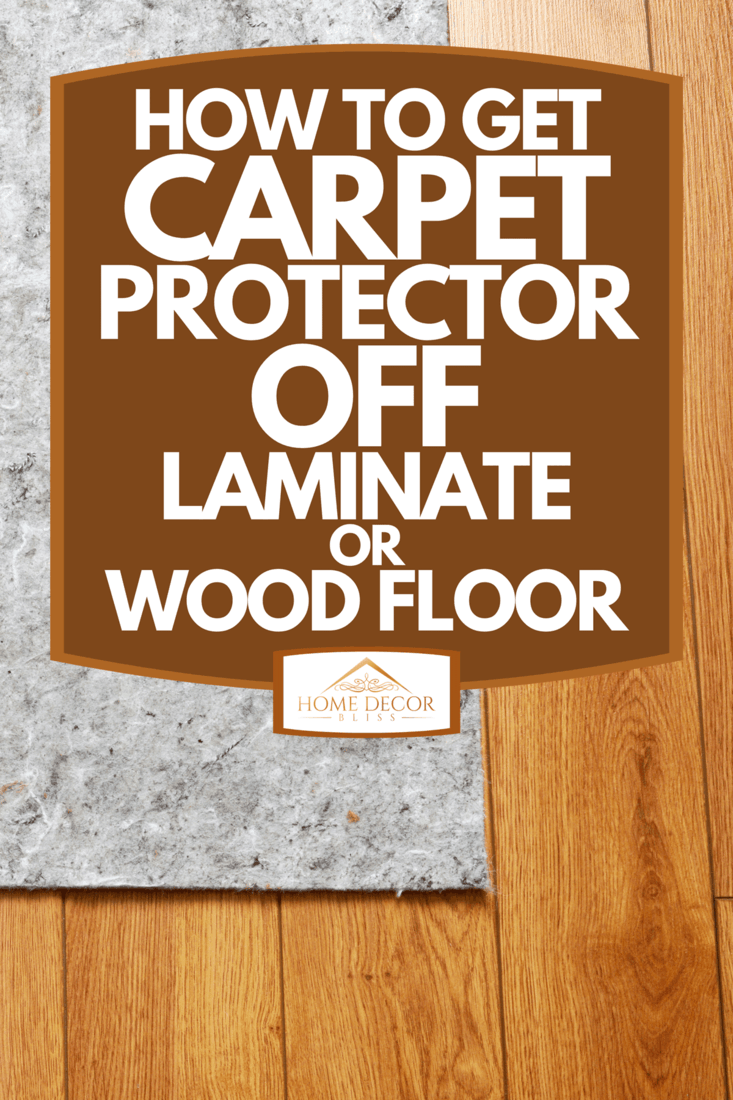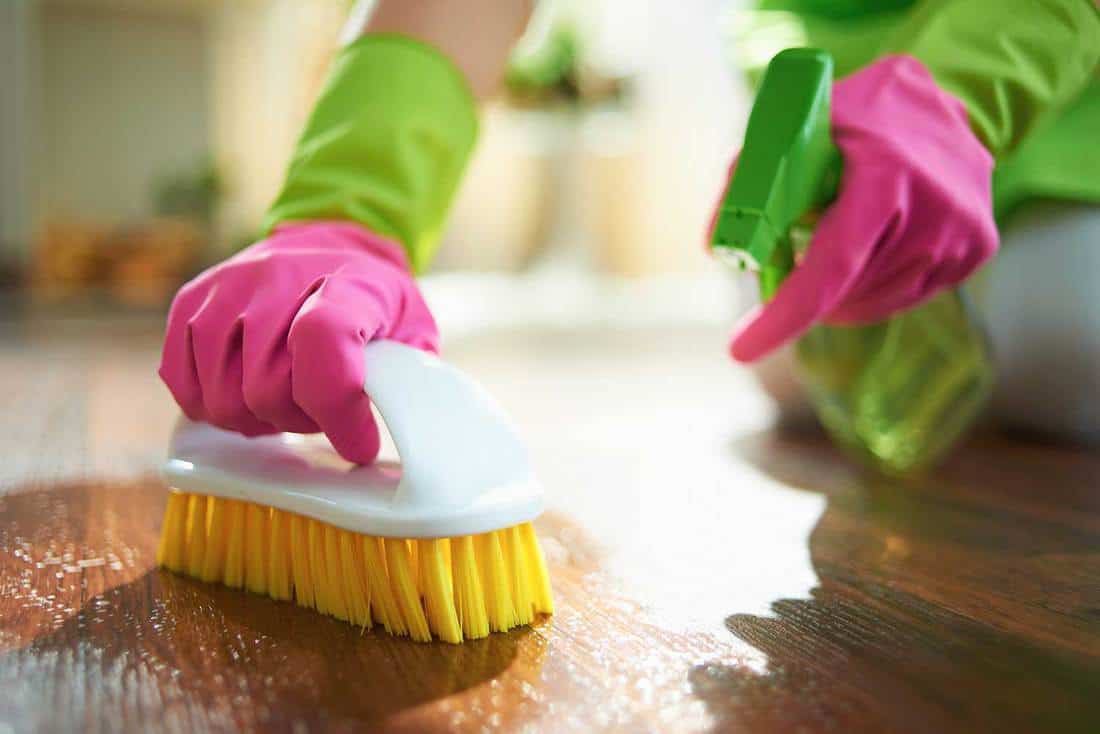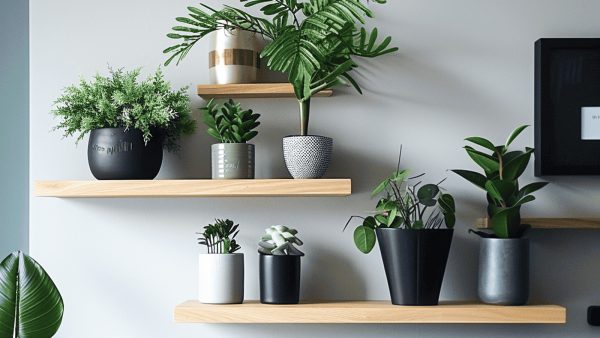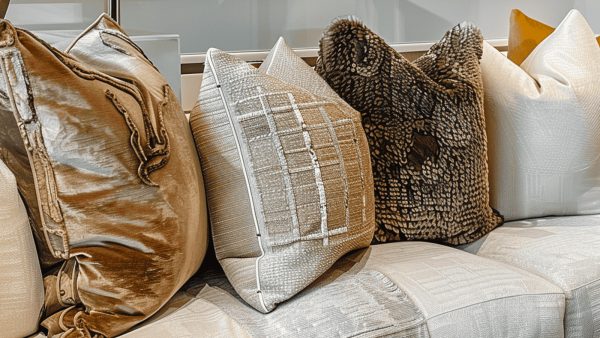Carpeted floors have a flexible style and they’re great for insulation, but the fibers absorb too much and need protection. So, you might be wondering how to remove carpet protectors from any neighboring laminate and wood floors. In fact, carpet protectors can be used on area rugs too, which are frequently used across hardwood floors to add color. So, we have thoroughly looked into just how to get rid of stray carpet protector residue on laminate and wood floors.
You can use either basic DIY methods or stronger commercial solutions to remove spray-on carpet protectors or traditional plastic film from laminate and wood floors. You can save time and money by using DIY methods first, and then resorting to adhesive removers:
- Peel back the edge of a plastic film
- Scrub finished wood with hot water or rubbing alcohol
- Apply heat with an iron and cloth or hairdryer
- Apply an adhesive remover or mineral spirits
While it is always important to protect your area rugs and carpeting, hardwood floors can also be more vulnerable than they appear. Keep reading to learn about the relationship between different carpet protectors and wooden floors, how long they stay on, and how to remove any unwanted adhesive.

Can you use carpet protector on wooden floors?
There are specific protectors for both carpets and wooden floors, but specialists such as TapeManBlue agree that they usually shouldn’t be used interchangeably. That’s because carpet protectors are intentionally designed to grip a clean carpet or area rug as tightly as possible. This is what allows the solution to deflect future filth.
There are many different options available with both film and spray can applications. Each protector is designed for a different kind of material with various degrees of adhesive strength and chemical structure that will prevent damaging the target.
Does carpet shield leave a residue?
Carpet Shield is a popular option for protective carpet film. It is one of many self-adhesive options, which will certainly leave a residue thanks to its powerful durability. This is especially likely if the Carpet Shield is allowed to sit longer than it was intended to.
How long can you leave carpet protector on?
Manufacturers of all carpet protectors will advise how long the product should stay before it is cleaned or reapplied. Most of the time, the maximum number of days a carpet protector can sit before causing damage is thirty days.
Some brands, such as Plasticover, offer protective films that last for sixty days. You can read the post How Long Can You Leave Carpet Protector On? for a more detailed explanation of what to consider when applying a new carpet protector.
How To Get Carpet Protector Off Laminate Or Wood Floor
Step One - Peel back the edge of a plastic film
Plastic film carpet protectors are specifically designed for an easy application or removal process. But they are still able to provide plenty of protection for your carpets and area rugs because they’re also powerfully self-adhesive. You simply need to roll out the film since the adhesive usually sits on the outside of a reverse-wound roll.
Unfortunately, this can sometimes lead to adhesive getting on your hardwood floors. The plastic film will immediately grip anything in sight.
First, you can either use a nail or a putty knife to peel back any edge of the film. A putty knife can save you from damaging your nails, but it will certainly save you time if a lot of the plastic film was applied. For example, you may not want to use your nails for an entire carpeted foyer that transitions into a hardwood floorplan.
We may include affiliate links and curated AI content to highlight top design styles.
Click here to find this reliable putty knife on Amazon.
Once the plastic film is removed, you can simply use a microfiber cloth to scrub out the fresh adhesive. A microfiber cloth is generally safest to use on wood floors since it won't leave any scratches on the finish.
Click here to find these inexpensive microfiber cloths on Amazon.
Sometimes, the plastic film carpet protector was allowed to sit on the hardwood floor for an extended period of time. This might happen with an overlooked edge when applying the film to an area rug with low foot traffic. In that case, the adhesive from the film has had too much time to settle in.
It is even easier to miss carpet protectors that were sprayed on since there is no visible layer to identify. If any residue has been festering for a while, then you will have to move on to the methods below.
Step Two - Scrub finished wood with hot water or rubbing alcohol

This step should only be used on finished wood. Even if your laminate or wood floors are stained, they generally do not provide as much protection as a complete wood finish. Water and alcohol are powerful liquids that can severely damage untreated wood. Unfinished wood will end up warped, or allow mold to build up over time.
You can read the post How To Remove Paint And Stain From Wood if you're trying to remove other substances from hardwood floors.
Even when you’re working with finished wood, you should do your best to use as little as possible to clean up leftover residue from carpet protectors. This applies to either the hot water or the rubbing alcohol. Neither would need much time to begin damaging the wood finish.
Popular carpet protectors like Scotch Guard are known to dissolve when subjected to hot water. Use a clean microfiber cloth to gently wipe the adhesive away with either hot water or a few drops of rubbing alcohol. Again, this method becomes less effective as the carpet protector is allowed to sit for longer periods of time.
Step Three - Apply heat with an iron and cloth or hairdryer
Hardwood floors don’t agree with heat, so this solution should be used sparingly. But you can use a low setting on conventional hairdryers to slowly dissolve any adhesive that has worked its way into the wood. Apply heat for just a few minutes, and the adhesive might return to more of a liquid form. This can then be wiped up with a microfiber cloth.
You may also use an iron and cloth strategy. This involves placing a clean cloth onto the unwanted adhesive and then carefully resting an iron on top of the cloth. Only apply the iron itself for a few seconds at a time. The heat should allow the cloth to absorb the adhesive as it becomes liquid again.
Step Four - Apply an adhesive remover or mineral spirits
You will likely need to resort to this step after your carpet protector was allowed to sit for too long. You can apply a commercial adhesive remover designed for hardwood floors. Ideally, it should also be citrus-based.
Click here to see this citrus based wood floor cleaner on Amazon.
A spray bottle can help you direct the adhesive remover, and control how much you use. The adhesive will begin to soften and spread, allowing you to scrub it off with a clean cloth.
Mineral spirits are actually a paint thinner, and pretty tough on hardwood floors. But it will probably get rid of the adhesive, too. It can be applied the same way as the commercial remover, but mineral spirits also need to be wiped down with a damp cloth. This will keep the mineral spirits from penetrating the wood itself.
Click here to find these mineral spirits on Amazon.
How do you remove No Nonsense floor protector?
No Nonsense floor protectors are reverse-wound rolls of film with options available for either hard floors or carpeting. So, like other film protectors, they are designed to be easily peeled away from the flooring. If necessary, you can use a putty knife, popsicle stick, or dull knife to help with troublesome corners.
Summary
While carpet protectors can be very useful during home repairs, or even in the long run, any commercial protector may cause damage if applied incorrectly. Hardwood floors are sturdy and gorgeous but have plenty of weaknesses. Now you know how to remove carpet protectors from your laminate or wood floors using both DIY tools and commercial products, no matter how long the adhesive has stuck around.







